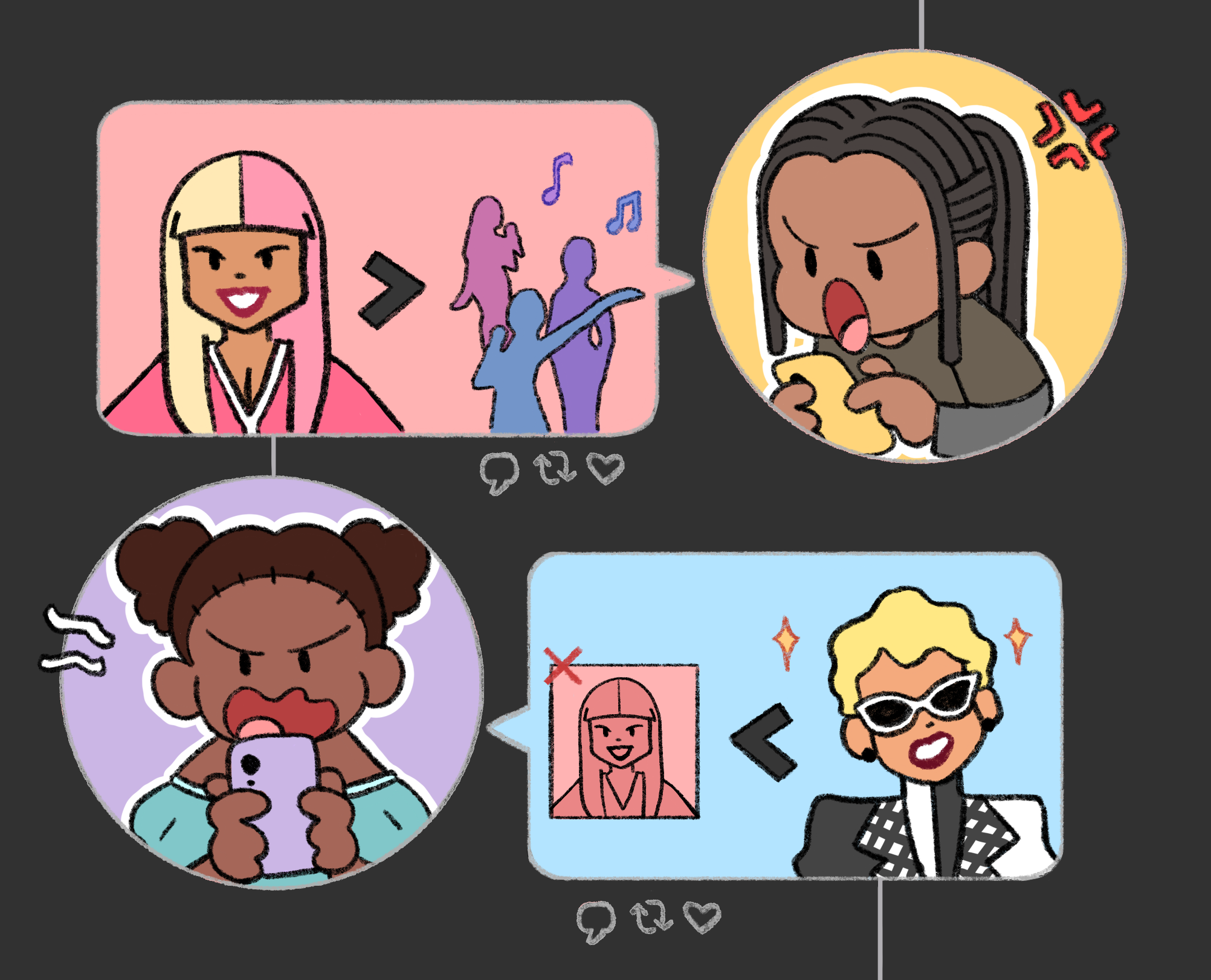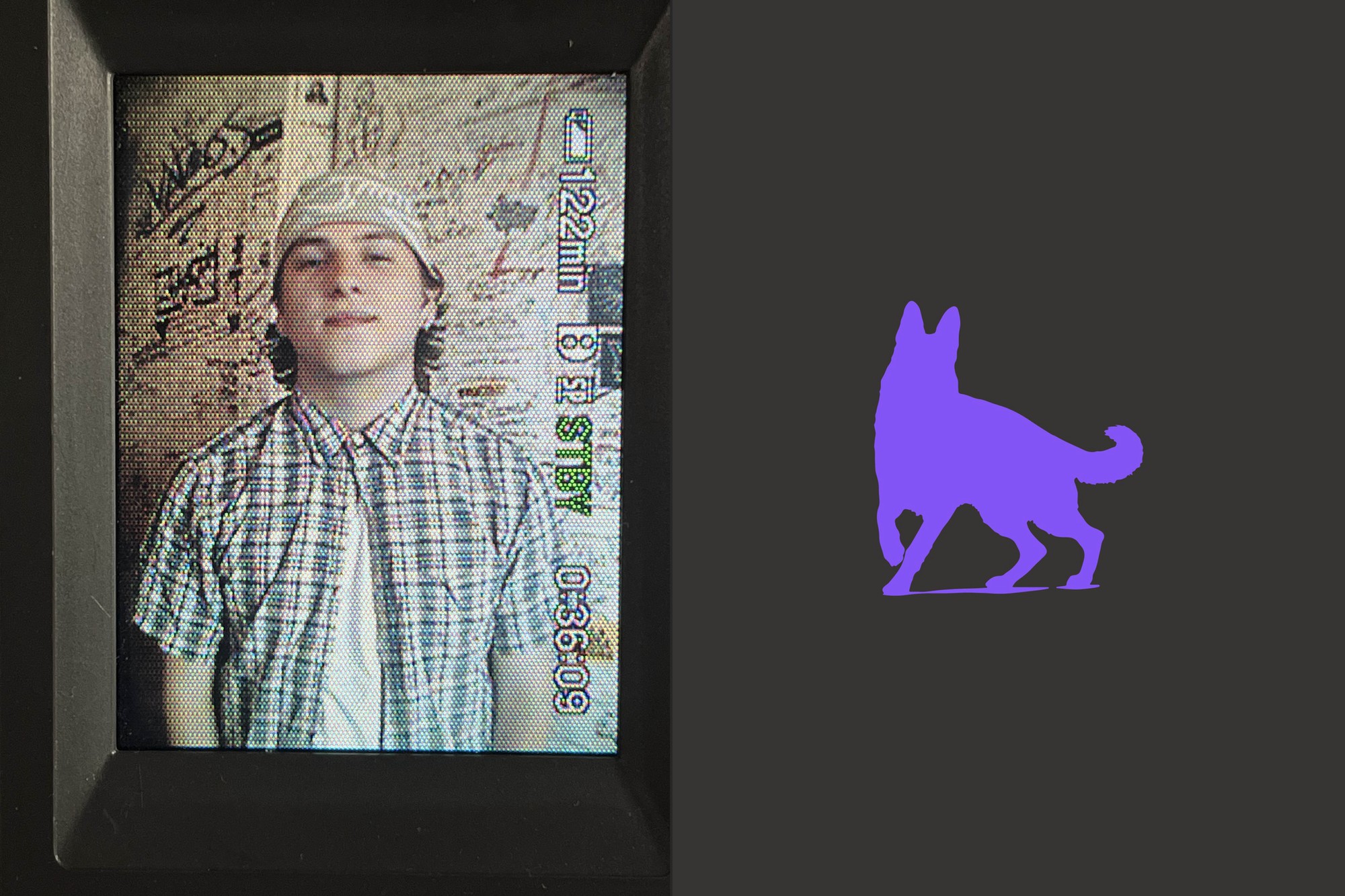Second Take: Putting artists in ‘industry plant’ category deprives value of accomplished music

(Helen Juwon Park/Illustrations director)

By Reid Sperisen
Sept. 12, 2024 3:41 p.m.
This post was updated Sept. 29 at 9:18 p.m.
Now more than ever, the hollow label of “industry plant” holds little meaning without assessing the roots of an artist beneath the surface.
Every year, a fresh handful of artists tend to break through into the mainstream with catchy singles or replay-worthy albums that propel their work from unknown to ubiquitous – practically overnight. For some music listeners, the surging popularity of such rising artists can seem fishy and inorganic, prompting skepticism over the reasons behind an artist’s sudden success. Often, these doubts lead to artists being erroneously labeled as industry plants – an antiquated, degrading term that invalidates the effort of hardworking musicians while ignoring the lost art of artist development. Although there is some value for the term, appreciation for music would be dramatically improved by letting go of the compulsion to automatically identify new stars as industry plants.
Usage of the term industry plant first became popularized in hip hop circles in the early 2010s. At the time, artists from Lil Wayne to Drake were accused by fans of obtaining their fame through personal connections rather than by virtue of their own talent or perseverance. Listeners across most genres probably place some value in knowing an artist’s background before they gained notoriety, but this type of origin story is especially important in the hip hop landscape for rappers to earn a fanbase’s respect. Since its debut, the term industry plant has had an inherently negative connotation that questions an artist’s authenticity through the speculation that their success is a byproduct of calculated industry puppeteering rather than legitimate craft.
Over the past decade or so, online industry plant commentary has expanded to ridicule most contemporary artists, with performers from Phoebe Bridgers to Megan Thee Stallion being subject to questioning about the viability of their career momentum. As Bridgers and Megan Thee Stallion illustrate, one of the central issues involved in the abrupt, often unfounded identification of industry plants is the fact that this terminology almost always displays an unfair bias toward criticism of non-male artists and artists of color. As a result, online discourse when a non-male or non-white artist attempts to launch a viable career can undermine a musician’s valuable point of view before they have even had the chance to introduce themselves.
[Related: Second Take: Stan culture poses more harm than good to artists, fans, music industry]
This summer, industry plant murmurings online have again been pervasive after two particularly prominent breakthrough artists captured the zeitgeist by storm: pop singer-songwriters Sabrina Carpenter and Chappell Roan. Carpenter has sent three smash singles – “Espresso,” “Please Please Please” and “Taste” – from her chart-topping album “Short n’ Sweet” to the top three of the Billboard Hot 100 this summer. Meanwhile, Chappell Roan has steadily climbed to the top 10 with her hit single “Good Luck, Babe!” and 2023 debut album “The Rise and Fall of a Midwest Princess.”
Despite having hit records, sold-out concert performances and substantial praise from music critics, both Carpenter and Chappell Roan have been the latest artists harpooned into the industry plant category by corners of the internet without substantial evidence to indicate that their newfound success is fraudulent. Admittedly, the autoplay feature on Spotify that has been found to play “Espresso” or “Good Luck, Babe!” immediately after a song by a completely different artist seems somewhat sketchy, but Carpenter and Chappell Roan are not the only artists to benefit from this algorithmic activity. More importantly, neither artist has had the easy road to immediate stardom that critics of supposed industry plants generally lament.
In fact, some simple logic further dilutes the validity of assertions that Carpenter and Chappell Roan are industry plants. If Carpenter was an industry plant, then she likely would have blown up in popularity nine years ago with her first album instead of recently with her sixth LP. In a music industry that is dictated by financial bottom lines, it does not make sense to intentionally postpone a return on investment for nearly a decade. Likewise, Chappell Roan would have probably debuted in the Billboard 200 Top 10 immediately last year if she had industry machinations to push her forward, but instead she has collected new fans week by week to ascend the chart slowly and steadily. Ultimately, both Carpenter and Chappell Roan happen to have the witty lyrics, recognizable sound and engaging personality to generate continued interest from millions of new listeners in a short span of time, and regardless of any advantageous connections they may have behind the scenes, such fervent fan investment certainly cannot be manufactured.
[Related: Second Take: Repeat purchases of vinyl albums harm environment, consumers]
A critical concept to understand in the broader conversation about industry plants is the difference between an artist being an industry plant and an artist being the beneficiary of artist development. For decades, artist development has been a strategy utilized by record labels to help prepare artists for the pressures of stardom, with preparations ranging from increased musical practice to branding, image-building and media training. With social media’s growing monopoly on shaping music consumption, the artist development system has largely broken down, replaced by record labels signing TikTok stars to try to cash in on virality instead of setting up aspiring entertainers for long-term success. Perhaps if record labels were willing to reinvest in artists before they have a hit on their hands, new artists would have better chances of sustaining popularity and acclaim instead of fizzling out as quickly as they broke through.
Of course, the industry plant term would not be incorporated into the pop culture lexicon so persistently if it did not hold some relevance from time to time. There are definitely some contemporary artists who arguably fit the modern standard of an industry plant with powerful connections behind the scenes that have likely opened doors for their musical careers. However, these artists taking advantage of the available resources they have at their disposal is not necessarily their fault. The music industry’s competitive ecosystem largely operates on a survival-of-the-fittest playing field, where only a lucky few out of countless aspiring talents ever succeed in connecting with the public or reaching recognizability. If given the same resources, many artists would naturally do everything in their power to maximize them.
Holistically, listeners have a degree of responsibility to be critical thinkers when deciding who to listen to. With so many profound psychological benefits derived from music, it would be short-sighted for online fans to associate such negativity and spite with new artists. Instead, consumers deserve to spend their time and money supporting music they genuinely enjoy – without feeling pressured to buy into the fandom of musicians they perceive to be manufactured – while having the openness to take chances on artists who might potentially make welcome additions to their playlists. As with most other aspects of music consumption, moderation is key, so casting artists off as industry plants must become an exception rather than the norm.
The next time a new artist achieves success, the seedy ideas of industry plant rumors must not take hold so listeners can appreciate the artist’s music and triumphs for what they are.





